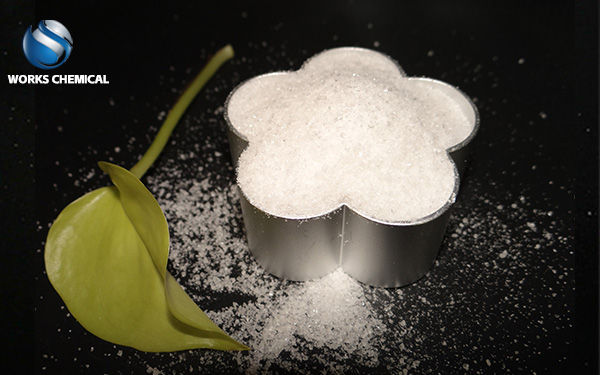
Industrial sludge enhancers significantly improve the dewatering performance of sludge through chemical and physical actions. The mechanism, effect and industry value of their assistance in dewatering can be deeply analyzed from the following perspectives:

I. Core Mechanism of Action: Multi-dimensional solution to Sludge dewatering problems
Destruction of colloid structure
The inorganic compounds (such as polyaluminium chloride) or organic high-molecular polymers (such as cationic polyacrylamide) in the sludge enhancer decompose the colloidal particles in the sludge through the effects of electrical neutralization and compression of the double electric layer, weakening its stability and making it easier for water to separate from the sludge.
Improvement of surface properties
Charge adjustment: By altering the charge distribution of sludge particles (such as electrical neutralization), the electrostatic repulsion between particles is reduced, promoting flocculation.
Enhanced hydrophobicity: It reduces the solid surface loading and specific surface area of sludge, making it easier for sludge particles to aggregate and form large flocs, and decreases the content of free water.
Cells break the cell wall and release water
Sludge enhancer can destroy the cell structure of microorganisms, release the bound water within the cells, and break through the bottleneck of traditional dewatering technology in treating cell water.
Skeleton construction optimization
Liquid skeleton materials form rigid channels in sludge, which, in combination with high-pressure dewatering equipment (such as plate and frame filter presses), enhance dewatering efficiency and shorten the pressing cycle.
Second, improved dehydration effect: Data confirms the technical advantages
The moisture content has decreased significantly
Experimental data show that after using sludge enhancers, the moisture content of sludge can be reduced from over 90% to 40%-60%, while traditional calcium, iron and aluminum salt agents can only be reduced to about 80%.
For instance, after being applied in a certain sewage treatment plant, the moisture content of the mud cake dropped from 80% to below 60%, achieving a reduction effect of over 50%.
The dehydration efficiency has been improved
The processing time is shortened by more than 30%, the sludge pressing efficiency of the filter press is increased by 100% to 500%, and the operation cycle of the equipment is significantly reduced.
The combination of high-pressure feeding and the pressing section further shortens the overall dewatering time.
Preprocessing simplification
Reduce or omit steps such as adjusting pH value and long-term stirring to lower operational complexity and energy consumption.
Iii. Industry application advantages: It combines cost, environmental protection and equipment compatibility Cost optimization
Low dosage of chemicals: The unit treatment cost is reduced, and the dosage of some sludge enhancers is only 50% of that of traditional flocculants.
Reduced equipment maintenance: Replacing corrosive agents such as lime reduces filter cloth clogging and equipment corrosion, lowering maintenance costs by 20% to 30%.
Environmental protection benefits
Sludge reduction: Volume reduction of over 50%, lowering transportation and disposal costs.
Resource utilization: After treatment, the mud cakes are easier to incinerate, make bricks or compost, achieving the goals of "reduction, harmlessness and resource utilization".
Equipment compatibility
Deeply compatible with mainstream equipment: When used in combination with plate and frame filter presses, screw presses, etc., the efficiency of the high-pressure pressing section is enhanced.
Automation upgrade: Combined with the fully automatic unloading and reverse filter cloth blowing and washing system, it reduces manual intervention and improves production efficiency.
Iv. Technical Comparison and Selection Suggestions
Differences from conventional flocculants
Complexity of components: The sludge enhancer contains surface modifiers, etc., and has a deeper level of action (molecular-level wall breaking).
Dehydration effect: The moisture content after treatment is lower (40%-60% vs. 80%), and it is applicable to a wider range of scenarios (such as high-difficulty printing and dyeing, papermaking sludge).
Key points of selection
Sludge property matching: Customized formula based on EPS content, pH value, etc. (For example, cationic type is suitable for highly negatively charged sludge).
Equipment parameter optimization: Adjust the dosage in combination with the pressing pressure and the pore size of the filter cloth to avoid excessive dosage leading to deterioration of the effect.
V. Industry Prospects and Challenges
Market potential: With the tightening of environmental protection policies, the demand for sludge treatment has soared, and the market for sludge enhancers is expected to grow at an annual rate of over 10%.
Technology trend: Compound conditioning agents (inorganic + organic + coagulant AIDS) are becoming mainstream, which can reduce the dosage of chemicals by more than 30%.
Conclusion
Industrial sludge enhancers, through the synergistic effect of multiple mechanisms, significantly enhance dewatering efficiency, reduce treatment costs, and provide the possibility for the resource utilization of sludge. In the future, with technological iteration and the upgrading of environmental protection standards, it will play a more crucial role in the field of industrial wastewater treatment.